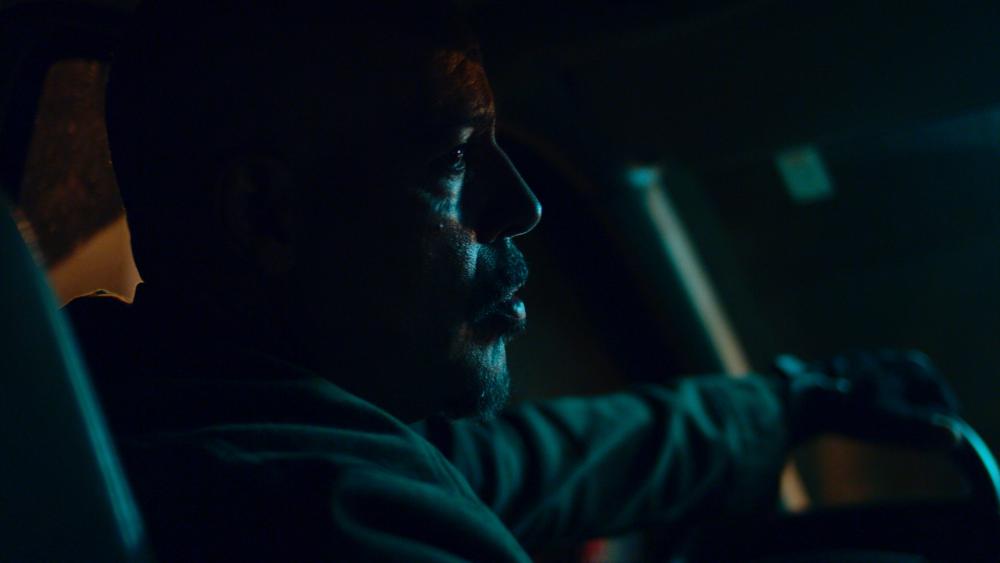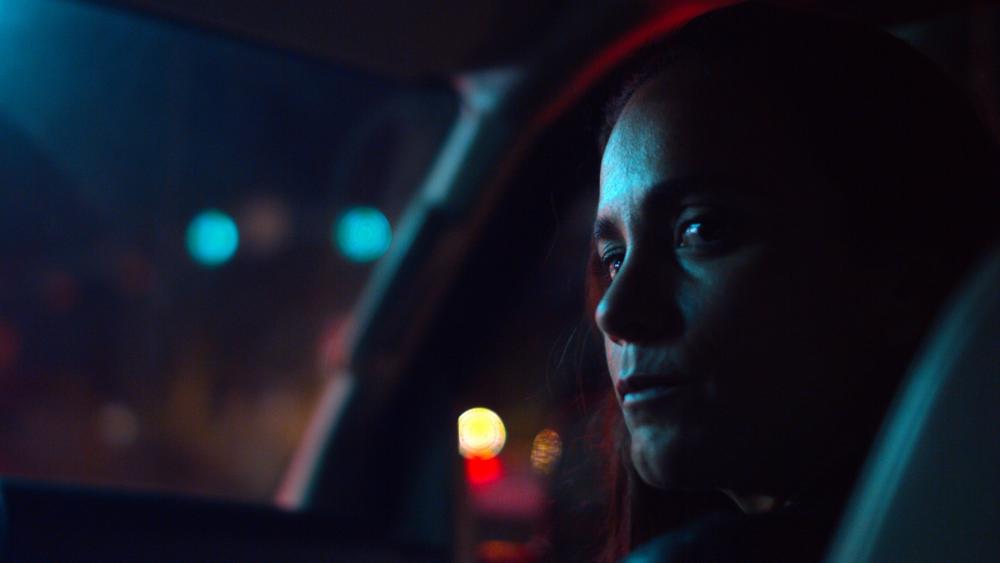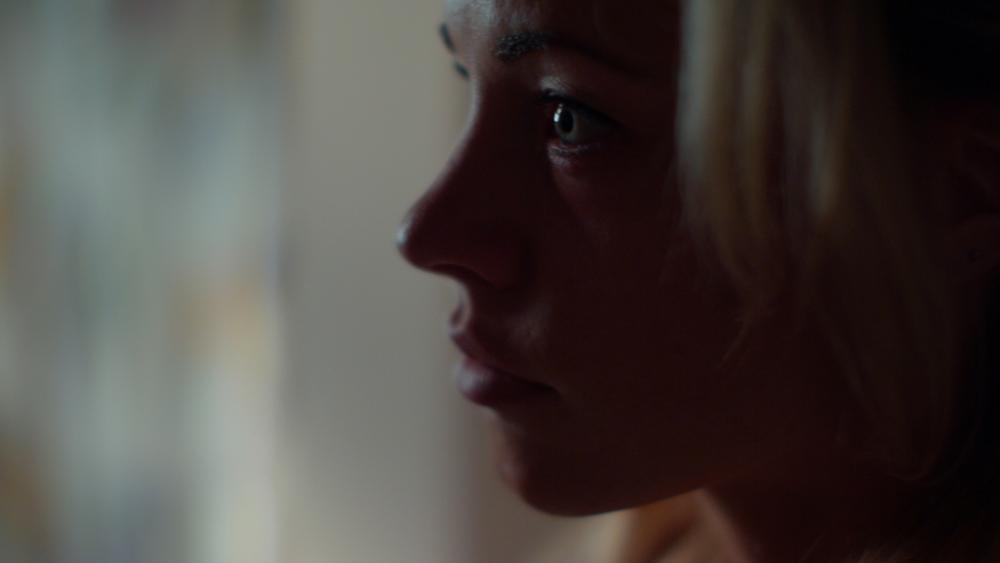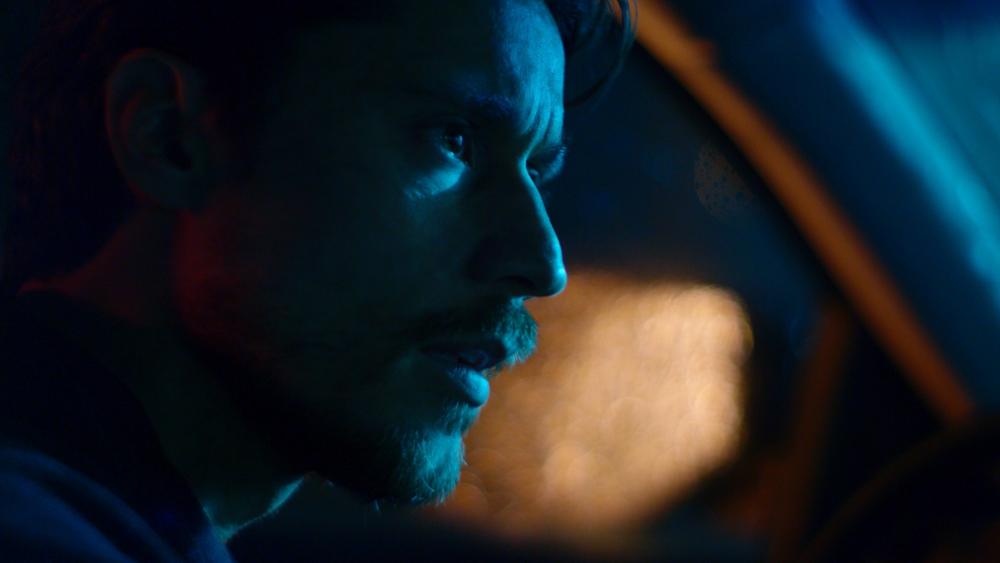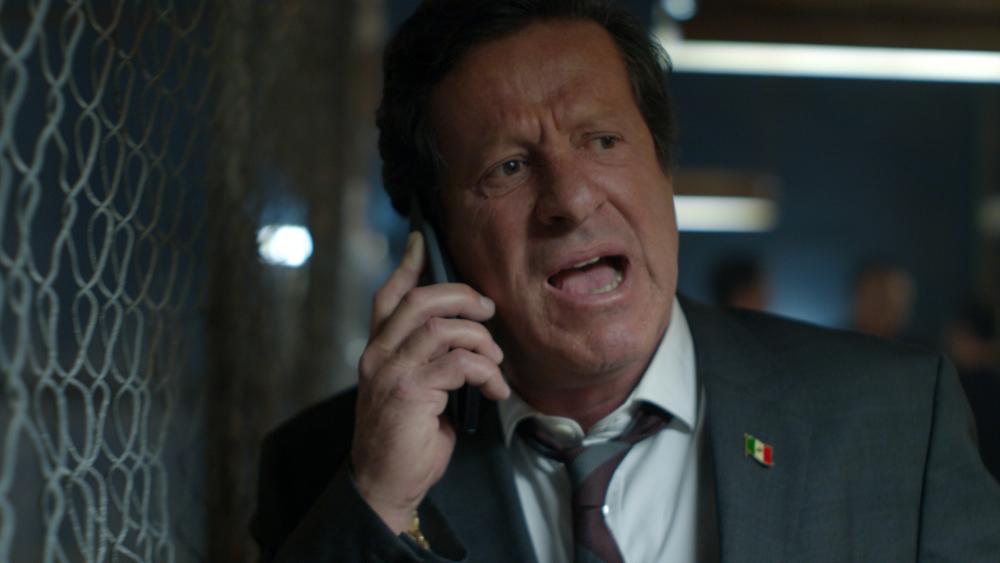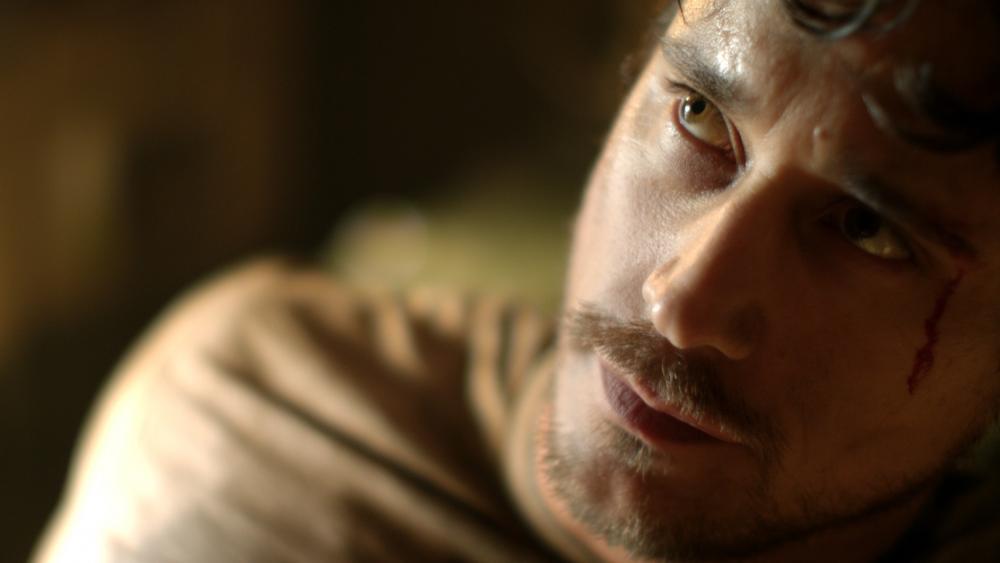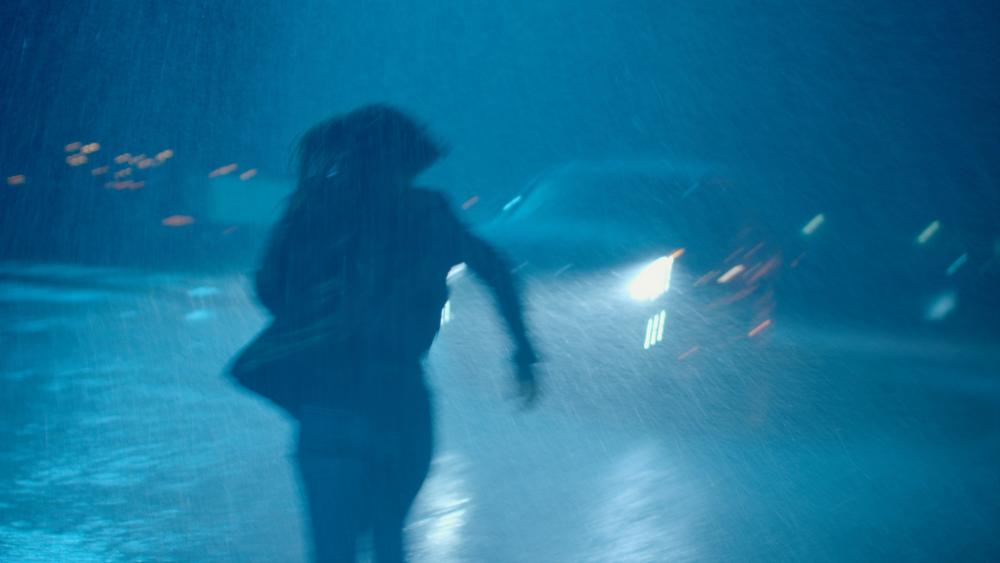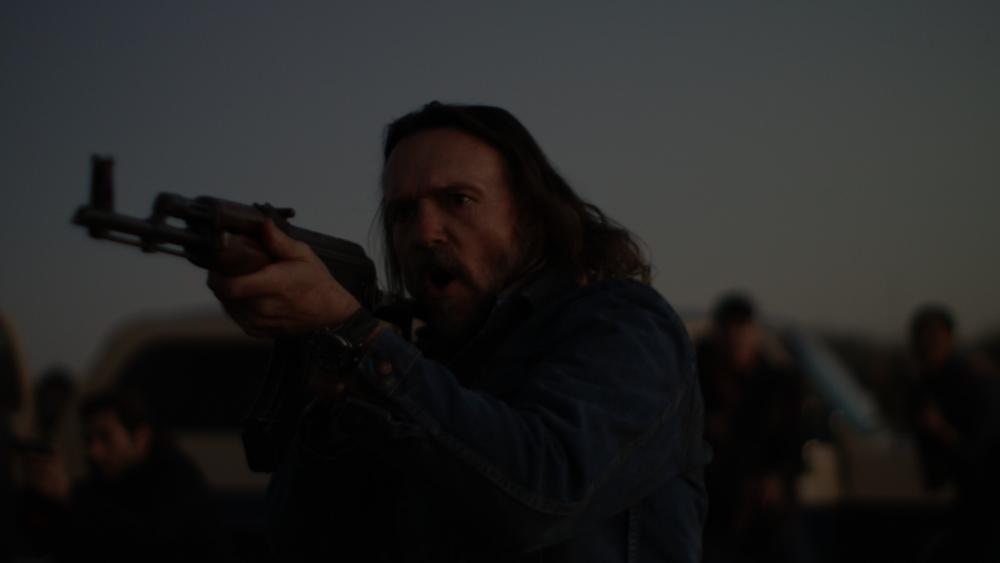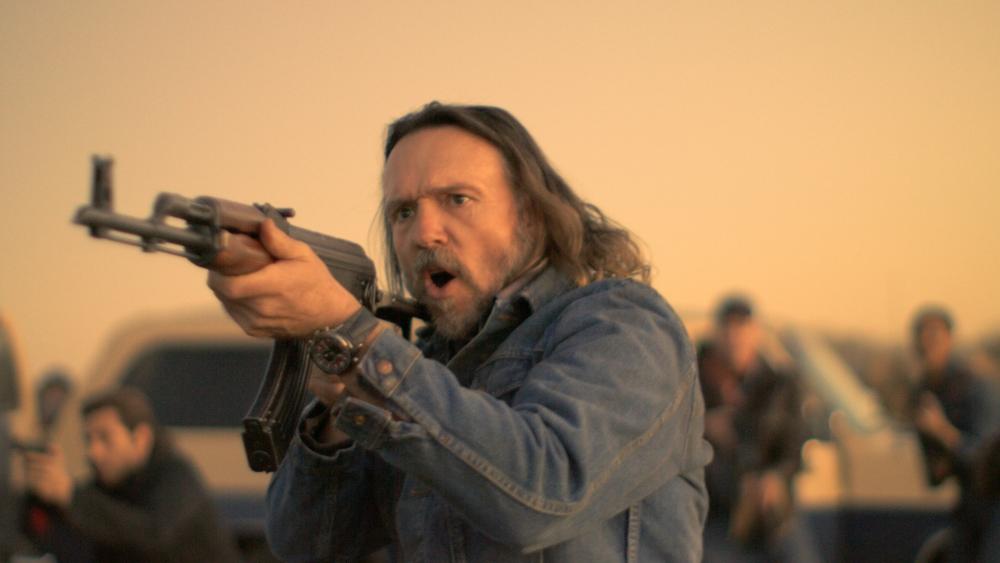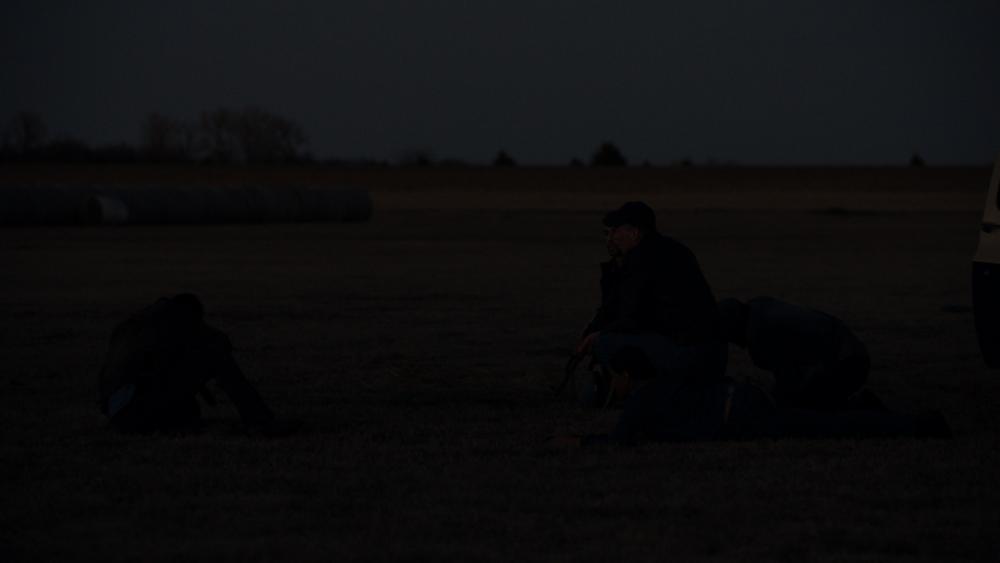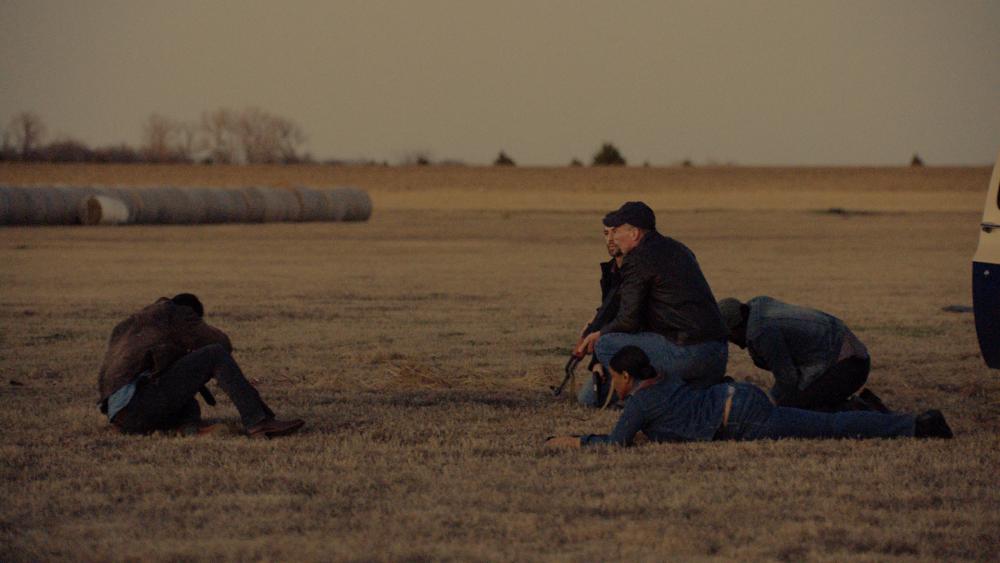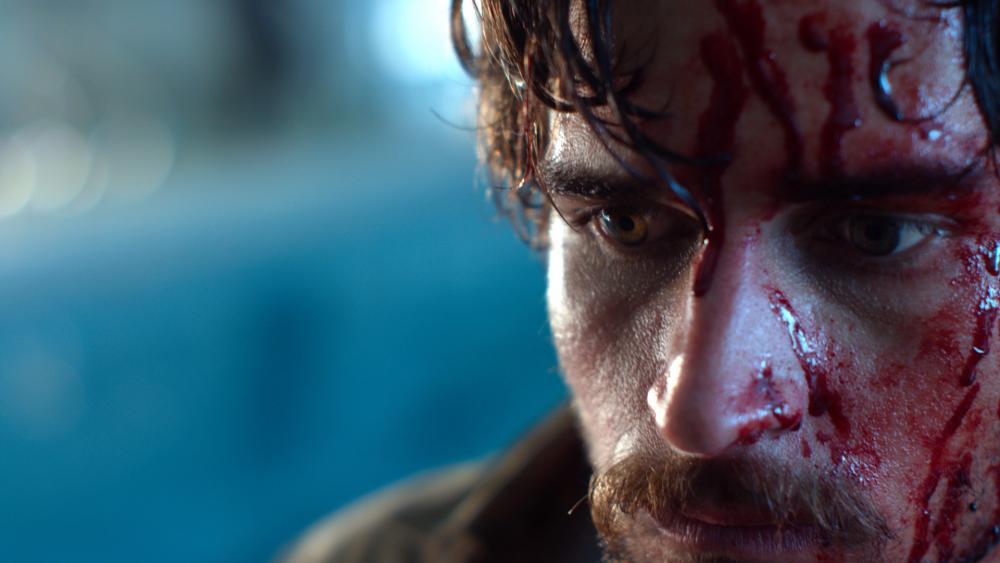-
Posts
233 -
Joined
Content Type
Profiles
Forums
Articles
Everything posted by John Brawley
-
Yep, especially if you look at what V9 could compared to what you can do today with V15. It's a whole new platform really and they've slowly added greater and greater editing functionality, and now audio and VFX as well as the best in class colour correction and tracking. JB
-
So far, from what I can remember back to V9, they've never charged for an upgrade. Once you own it, you own it. JB
-
Err.. AJA Cion Axiom Ursa Ursa Mini 4K BMD 4K Production Camera JB
-
Here's a little update Andrew from SLR Magic has allowed me to share. I want to share as much as I can remember from my phone call with Andrew so hopefully it's relevant to those of you who are interested in these lenses. For anyone going to NAB, Andrew will have a booth and will be there. I invite anyone interested in these lenses to go see them. Andrew is a very knowledgeable and open guy and he really love to talk lenses. He cares about his products and making them the best they can be. They have some pretty cool announcements for NAB, whcih I won't share, but he's what I can... Here's a picture of a pre-production 32mm lens. www.flickr.com/photos/johnbrawley/40047075535 I haven't shot with this copy yet, but this means SLR Magic are very close to going into production with this lens. I imagine he'll announce shipping at NAB. After this they're working on the 18mm and the 135mm to fill out the set. I also received an updated version of the 25mm to replace my copy. It developed an issue with the focus bumping sometimes at close focus and Andrew tells me he's totally updated the helicoil design and has already updated a few customers copies. Anyone who sees this issue should be able to arrange to have it fixed. I didn't want to let go of my 25mm as I was in the middle of a job so he's sent me a second one and I'm now sending mine back. What's cool is that SLR Magic went and immediately addressed the issue and have re-designed the lens to make sure it doesn't happen again. I've just finished a 6 month TV series using them day in and day out and this has been the only issue with them, even though they've been on prestons / motors with clamp on's all this time. I recently did a blind comparison between Zeiss CP2's, Panavision Primos and SLR Magic APO primes. See if you can see which is which here. Don't read the description if you want to try and guess which you like most. After that are some clips from a series I did which are all SLR Magic APO prime shots. https://youtu.be/s6fFUCSZzOg (everything except super macro shots which were Cp2 50mm macro) www.flickr.com/photos/johnbrawley/40047076045 Andrew also sent me copies of their new E mount, MFT and EF adaptors. www.flickr.com/photos/johnbrawley/40941422171 www.flickr.com/photos/johnbrawley/40047075035 This means you can use your APO primes on any of the above mounts and with the SLR Magic adaptors they've kept the tolerances very tight so the witness marks should line up perfectly without having to actually re-shim the mounts / lenses, though you can do that if you need to. As a bit of a surprise, Andrew also sent me some brand new ND filters that he's been working on. Many would already be familiar with the Variable ND's they make, which many rate as one of the best made and offering very good IR protection as well. Some of you may know I shoot a lot of MFT lenses on Olympus, DJI and Blackmagic MFT cameras so I use a lot of smaller lenses with screw in ND's. Lately I've mostly been using the Hoya / Kenko PRO screw in ND's as they seem the most neutral. Andrew tells me he decided to make these after he decided to buy some Hoya Pros for his own work and was firstly forced to buy them from three different countries because no one stocked the full set and he THEN found that the deeper stop copies had more than 2/3 of a stop variation in exposure from where they should be. Well SLR Magic have done their own take on ND filters. They've aimed to be less than 1/3 of a stop variation and to sell them together as full sets. They make a set of N3, N6, N9, N1.2 and N1.5 (1-5 stops) and a second box of N1.8, N2.1, N2.4, N2.7 and N3.0 (6-10 stops) and each set is only $399. Pretty decent deal. I don't want to come off as a shrill, but I really like what these guys are doing and I especially like how responsive they are to feedback from us that use these lenses. In lieu of them having better marketing I'll try to let as many know as I can about what they're up to. JB
-
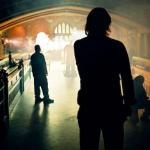
Best settings to make a Ronin feel more organic
John Brawley replied to HockeyFan12's topic in Cameras
Gimbals and Drones are a bit faddish at the moment. I mean once you've had a drone shot in your sequence then you still have to do the basic story telling. It's a shot..or two maybe....or maybe it's the intersticial tone shots in between scenes at most. Gimbals require more time and people to do well than a Steadicam does and offer very few advantages, and come at the cost of dramatic feel. Everytime I bring this up with a pro gimbal human, they say hey you can go low to high in-shot or go through a window and hand off. And yes, you can. But I rarely see this being designed in shots. Now I just see shots that should be done hand held or on a steadicam being done to an inferior standard and for impinged dramatic feel using a gimbal because that's the tool of the moment. Don't be seduced by the tool and use them to do what can do well. JB -

Veydra Mini Primes vs. SLR Magic Hyperprimes for MFT
John Brawley replied to HenryTheGoodman's topic in Cameras
SLR Magic are legit. I've been buying for them for many years and I have many of their lenses. They are Hong Kong based and they've never been great at marketing. But you can order them with confidence and they're now available from big box retailers like B&H. You can also contact them directly and they'll generally get back to you. The hyperprimes are indeed their stills lenses "cinevised", so de-clicked etc. If you want PL, then they make their own VERY nice APO primes. I recently shot this and am finding few people can pick the SLR Magics from the Panavision Primos and Zeiss CP2's that they're being compared to. JB -

Veydra Mini Primes vs. SLR Magic Hyperprimes for MFT
John Brawley replied to HenryTheGoodman's topic in Cameras
I own both Veydras and many of the SLR Magic lenses. They're quite different. They Veydras are more consistent in terms of their performance and across the board are more uniform to work with if you're trying to work with remote focus units etc.. The SLR Magic have more individual personality and aren't as consistent in terms of their mechanics. Owning both of them I tend to reach for the SLR Magic first, usually because they're more unique in look. The 25mm 0.95 has a great look for certain jobs, and I really use the 10mm a great deal. JB -

Ursa vs. C500 vs. C300 for best cinematic image?
John Brawley replied to rokkimort's topic in Cameras
Totally. Lets makes the blacks black for starters on night scenes. Otherwise it’s not night it’s a day scene. JB -

Ursa vs. C500 vs. C300 for best cinematic image?
John Brawley replied to rokkimort's topic in Cameras
I often see this "low light" thing coming up with regards to Ursa 4.6K.... Some of my favourite frames from the Ursa 4.6K, including some low light shots. Most of the car interiors are lit available light with a single matchstick and some cyan outside on the windscreen. These are frames I've take from dallies on a series called Queen Of The South. There are graded in CDL (no kets or secondaries) and no noise reduction. I've also included some before and after frames of a scene in the first episode in the series where we ended up shooting well after sunset with no lighting. Again, no NR. JB I would add, I own a 7q and a 7q+. I couldn’t think of anything worse as an operator than having to rely on an external recorder that you have to power and cable reliably. It will get in the way, especially for hand held. JB -
It's a great lens for sure, but it's not so great for video except in very limited circumstances. It breathes a lot and isn't parfocal. But it's a beast for stills. I wish Olympus would repirsise the F2 zooms they did in 4/3 for m4/3. (They made a 14-35 F2 as well) JB
-
The camera's face barriers to higher end acceptance because a lot of camera rental companies don't even stock them. You can't rent them from Panavision. They're just too cheap to be worthwhile to rent out. They're cheaper to buy for a production than to rent. I haven't bought a camera for a show for a long long time. I only rent. I own two of my UM4.6K bodies because the production bought them for the show I was shooting and "gave" them to me at the end because they'd written off the costs, which were, in the scheme of things very small for camera. JB
-

Please explain: Video vs. "organic"/cinematic look
John Brawley replied to anax276's topic in Cameras
And mine was simply that in my opinion, you can get closest to those goals by choices that happen before you expose anything. The one's that happen after exposure have less weight. JB -

Please explain: Video vs. "organic"/cinematic look
John Brawley replied to anax276's topic in Cameras
Yes but are you wanting something to look like it's shot on film or to look cinematic. Those are different goals in my view. Seinfeld was shot on 35mm. But it's not cinematic. By pointing to lensing, lighting and staging, I was trying to say indirectly it's not really the "camera" or the film look recipe you have in post. All that stuff happens before the image is captured. It's mise en scene. It's an important part of these discussions that always seems to get left out. The tech stuff can help, but in my view, the objects you shoot, the lens you choose to shoot them with, where you put the camera and how you light them and how those elements iteract all matter a lot more than any magic bullet (pun intended) you think you can have in post to emulate that look. And in order for the post film look recipes to work, you need a camera with high dynamic range and high bit depth. Which is why I mention those elements next. Even when you have a scene that appears to have low DR, film has a way of rolling off highlights that you can emulate if you have the DR to do it. So you take your 14 stop original, crush it to fit into the 8 stop TV you're looking at and jam the extra stops into the highlights to give you a softer roll off. And in swinging the grade around a high bit depth stops the image from breaking down and looking blocky and digital. Film has always been not that great by any technical measure, but it's always something we try to emulate. So far I haven't seen anything that matches the way grain size changes with exposure though for example. Film grain size gets tends to get smaller or tighter as it goes towards clipping and larger when it's underexposed. In the same image you have different sized grain depending on where it sits on the exposure curve. That's hard to emulate in an image in a way that's realistic (as a match) because we're often mapping a much higher DR from the camera to a lower display DR. The colour fidelity is also something that's hard to describe. No one ever publishes the colour response of their sensors, but film still has the edge. And yeah, just because they have a file that's labeled REC 2020 doesn't mean that file has 2020 worth of info. Again a higher bit depth image means you can stretch the colour information out a bit before it breaks down. You're also confusing display technology with capture technology. Just because you tube displays in 8 bit 264, doesn't mean that's all you need for capture. SD tv for many years had a mix of 35mm and electronic cameras. There was always an easy distinction to make on the camera acquisition despite the fact the resolution was the same for both acquisition technologies. Super-sampling has been happening since the beginning and is always going to trickle down to lessor display mediums. Otherwise you'd be happy with what your iPhone shoots right ? Don't fall for that trick. Compression factors here too in this, but this is a different conversation. JB -

Please explain: Video vs. "organic"/cinematic look
John Brawley replied to anax276's topic in Cameras
In a similar vein a few years ago I did something similar. https://johnbrawley.wordpress.com/2011/06/02/posted-available-light-tests-are-finally-online/ In my view it's lighting, lensing and staging followed by dynamic range and high bit depth. JB -
Because there are no ads and the visual noise of youtubes other clips that inevitably comes up. JB
-
For me, bit depth matters much more than resolution. JB I can't even remember it. Go shoot and tell us what you think. JB
-
Hi. Make sure you have the latest firmware. BM often incrementally tweak things "look wise" along the way without being great at documenting it. If you're shooting RAW, the same applies with Resolve. Go for the latest rev. JB
-
You will definitely affect the collomation of your lens by putting a filter at the rear. No question. Behind the lens even a small amount counts for a lot. Some cameras (Panavision) allowed for rear filtering by having a filter slot near the gate but you always have to have a clear in to maintain lens collomation. You also need to expect that the filter characteristics will change. The filter will have a different effect, in my experience it's more heavy handed, which is why we don't tend to see it done much anymore. So you might like the 1/4 Low Con but you'd need a 1/8 behind the lens and it will still feel like it's doing more than the 1/4 in front. Consider that a low con is doing the same thing that's accidentally happening with your flare...milking the blacks. If so, do you then just take then Lo con out for that shot ? There are also some great filter tray tilting options as well. Bright Tangerine have a tiltable filter tray, and even a bracket that can tilt the whole mattebox. I think that might be the easier more practical solution. JB
-
Commercials in my experience have the $$ so generally they want the more fully featured cameras. Remember until a few months ago, you could not load a LUT into an Ursa. On bigger shows the eco system is as important as the cameras look. I love Alexas a lot simply because of the way they integrate so tightly with the WCU4. You can change settings without having to touch the camera and no stupid MDR hanging off your camera. That stuff matters and that's where the more expensive cameras still have the advantage. Look at the EVF. It's actually one of the best EVFs I've ever used. It's very underrated however, it's impossible to use on a geared head. You can't get it back to the back of the camera. The wooden camera mod lets you address that sort of, but it's still not very elegant and kind of a kludge, and frankly a little flakey. Even on my own sets until the most recent shoot, the Ursa was a "C" camera and you're already grading it to match another principal camera. But I was pleasantly surprised at how great the Ursa can look when it's not pretending to be another camera. Having it as the principal camera meant I can make it work to its own imaging strengths. And that's where I think Blackmagic have done something really special with this camera. So bigger rental houses will only see it as an adjunct to other cameras. Trying to grade this camera to look like an Alexa or RED isn't the best way to make the most of what it can do. It's actually shooting with it on its own terms that its look comes into its own. Something I imagine few have been brave enough to do. Thus, you won't see it in rental houses. JB
-
I've shot many broadcast hours on RED MX and that camera is realsitically only ISO 320 native and 1600 max useable ISO. I also just wrapped a show using 3 x Ursa Mini 4.6k that were used in very difficult conditions, including nearly two weeks of shooting in one of the hottest (42 deg average daily temp) and most remote parts of Australia without a single problem. This is the first time I've used them as the principal main camera on a TV drama series. They worked very very reliably. Only half my camera department of 7 had really worked on them and one of the focus pullers was very anxious about the camera. By the end she was trying to convert the DP on the next show she was going to to use them over a RED Weapon. We blew an SDI port eary on, most likely because of a fault with a wooden camera EVF modification. (The wooden camera EVF mod blew up). Ive had the same three bodies across a few shows now and they've now done more than a few hours. If anyone has looked looked through the back of an Alexa you'll notice it's a lot like the Ursa Mini 4.6k. You can see daylight through both of them. The back two thirds of an Ursa Mini 4.6k is just a big old heat sink. I haven't had twig problems with my Ursa, but strangely the same twig problem has happened to me on an Alexa. Grass stalk through the bottom of the vent caused a very loud noise mid take. Go figure. In fact I once saw an arri rep pour water through the back of the Alexa through the top and watched water run out the bottom to demonstrate that it was just a heat sink in there...like the Ursa Mini 4.6k. Jb
-
Like Andrew, I am a fan of blacks being black. That's how this piece was deliberately graded (in the link) I detest the LOG grades people seem to be doing these days. I haven't found that the camera is short any detail in blacks more than others of similar specs. Perhaps you're not liking their flat curve, and it sure could be bent a little more. But I think a very loggy image with an 8 bit codec doesn't work either when you try to put contrast back in. It's a fine line trying to stretch DR over 8 bits. Not many do it, but the Oly cameras also have their great curve editor so you can make your own flatter profile. Give it a try ! INterested if anyone has ? It's what I used to do before the FLAT profile. Sometimes it's good, but I find it's diminishing returns to try and put a nice look back onto the image. And yes, the EM5 Mark II is meant to be their "video" oriented model. But it does have a different sensor family. Personally for stills I very much prefer the EM1 Mark 2 and the video is a very decent improvement over the EM5 mark 2 for many practical reasons. 4K helps a lot too. Look at how far they've come within 2 models of suddenly waking up and taking video seriously. I have been active with Olympus and they really are listening and want to improve their video capabilities. They're never going to make a fully video oriented model, as photos and optics (and actually mostly endoscopes) are their core business but, I've been pleasantly surprised at how a they've come, and that's from sitting on the inside somewhat of product development. And they know what semi professional, serious enthusiast users want from video now...it's up to them to see what they can add, but they've always been true innovators. It's why I've always liked them. I've been shooting Olympus digital still since the E1 (Kodak CCD sensor back then) They don't get enough credit really when you look at what they've done. They have always been genuinely innovative. They created the ultrasonic sensor clean, they were the first to do live view, their cameras and lenses have always been smaller, lighter, robust and weatherproof. They just haven't been paying attention to video till recently. Now they've woken up. What's fascinating about Olympus is that the imaging division is a small part of their business however, it's R&D is what drives their innovation in their cash cow, the endoscope market, in which they currently have a stranglehold of something like 70% of all that business. So the R&D in the camera division means their medical imaging division stays so far ahead of everyone else. I'm a few weeks away from releasing some studio test footage. I'll do some Alexa side by sides and we'll see how that goes....:-) JB Disclaimer - I've shot Olympus cameras for years, but I'm now an Olympus Visionary and have travelled and met with the wonderful people at Olympus Japan for the purposes of bringing better video features to these cameras :-)
-
I think the problem is that, like higher frame rates and shutter speeds, it's treated as an issue that old fuddy duddys adhere to and the new kids or amateurs just think it doesn't matter. That by adhering to these principals that have worked pretty well for 100 years of motion imaging we're backwards. The attitude of new is always better. The attitude that principals are old fashioned and somehow hold everyone back from the pictures being better. This guy has posted this questionnaire on at least three forums, and even on DP review, the most friendly to his heretical ideas, almost everyone is saying manual is better. Interestingly, and universally, I'm seeing his views are being pretty much shot down by anyone who's actually got half a day of shooting experience. He's a home user, at best an enthusiast who for some reason, despite posting on three very different forums and getting pretty much the same response, still thinks his opinion is more "right" than the collective wisdom of these forums. When you have a guy posting his opinion as fact then it gets people's nose out of joint. Especially when he just ups the ante when there are many compelling views from experienced users. Saying something is "better" because in their own personal view (which he never qualify as opinion) means people will try to gently suggest, subtly persuade, try to guide them to understand or just down right call it BS when it goes universally against most accepted practice. When you do call it you're accused of being outmoded or old fashioned, that the new technology means these old rules (I think of them as principles) don't apply.. Some principals are just obvious to me. I could shoot a roll of film by looking through the lens of an 35mm SLR and using the viewfinder to frame while I take a photo of my ear. There's nothing that says you have to frame a camera by looking through the viewfinder. JB




